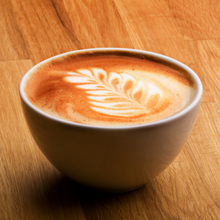
What is a latte? Is it your go-to order at Starbucks or the local coffee house? If so, you are not alone.
Of the 400 million cups of coffee consumed in the United States each day, millions are variants of the latte. The latte is among America’s big four caffeine products, along with espresso, cappuccino, and ice coffees.
Whether you’re one of the many latte drinkers in the country or you’re considering the switch from other espresso drinks to this type of beverage, learning more about this coffee product is essential. Here’s all you need to know about this fascinating drink and how to maximize your enjoyment of the famous coffee.
History of Caffè e Latte
A latte begins with the same base as a cappuccino — a shot of espresso coffee. Then, espresso is combined with steamed milk to create a creamy smooth coffee beverage with a delicate espresso flavor. The typical shot of espresso to steamed milk ratio is 1-to-2. To finish up, the latte is topped with a thin layer of milk foam. In its simplest terms, a latte is a coffee created by combining espresso with steamed milk and milk foam. It comes in many variants, including both hot and cold, and it is considered one of the most popular espresso drinks around the globe.
The latte is traditionally thought of as a breakfast coffee. It can probably be traced back to the 17th century, even though cafes have commonly mentioned it since the 20th century. It originates from Italy, although it has been used for many years throughout mainland Europe and Britain.
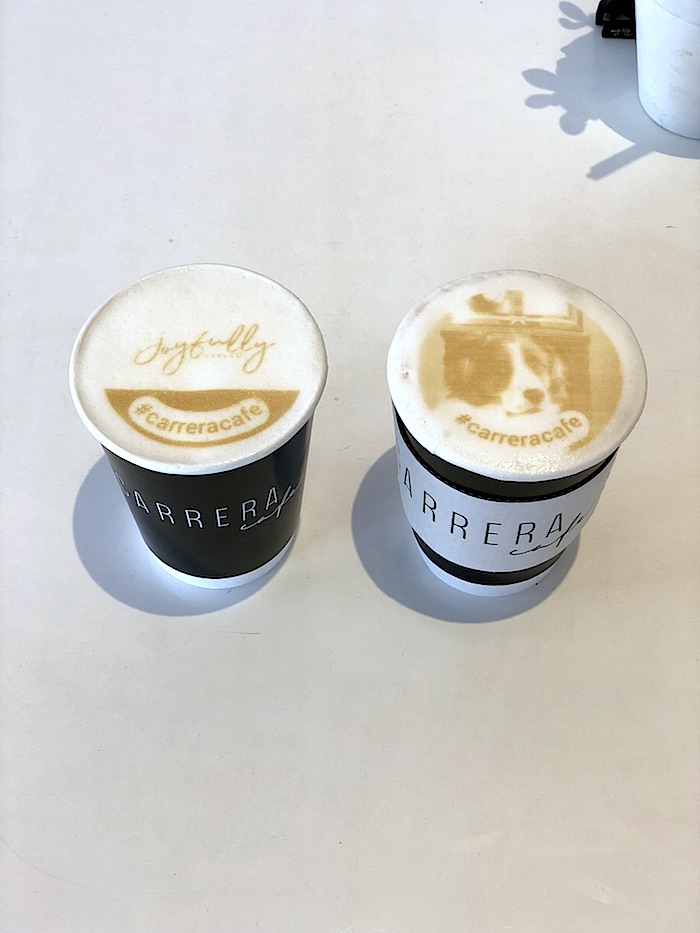
Of course, it has been one of the most popular espresso drinks in the United States for many generations too. The commercial version of the drink is very much an American invention despite Europeans having been drinking this variant of coffee for ages.
Linguistically, the English word “latte” is a shortened version of the Italian “caffe latte.” In other countries, the drink is commonly referred to as “café au lait” (French) and “cafe con leche” (Spanish), which translates to “coffee with milk.” So ask for a latte, lait, or leche in those countries, and you’ll receive a glass of milk.
In America, the Café Latte as we know it today is claimed to have been invented in Berkeley, California by the Caffe Mediterraneum. However, it wasn’t until the 1980s that its popularity exploded in Seattle, often heralded as the capital of coffee due to its Starbucks links. As a result, the number of coffee shops per person is 10x on the national average. Unsurprisingly, this spread coast to coast over the next few years, establishing itself as a national obsession before the turn of the millennium.
Given the millions of cups consumed each day, it seems that the popularity of the latte is here to stay too.
How is Café Latte Made?
As the name suggests, the latte is essentially created by mixing coffee with milk. The milk creamer is traditionally a combination of steamed milk and a layer of foam.
In many ways, a latte is very similar to a cappuccino but has more steamed milk and only a little milk foam instead. Another similar coffee drink is the macchiato (read what is a Macchiato to learn more), which uses foamed milk only. A latte starts with an espresso shot (one for standard sizes and two for larger). The latte cup is then topped with the steamed milk (6 to 8 oz, or more for a large) and the milk foam. Baristas in coffee houses may pour the milk foam so that a pretty pattern is created.
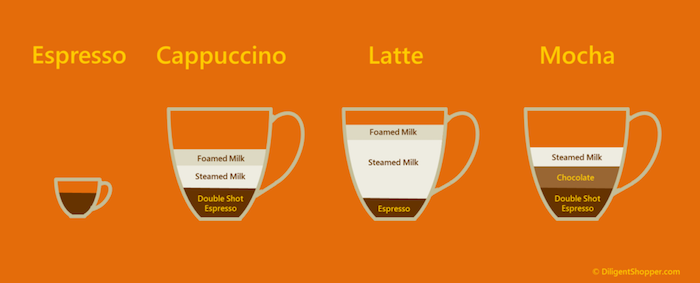
Since going mainstream in the 1980s and 1990s, the basic formula for success has remained. However, new flavors have been introduced with vanilla, cinnamon, and various syrups added to millions of lattes every day. Lattes may use whole milk, 2% milk, or nonfat milk. In recent years, coconut milk and almond milk have become increasingly popular for dietary needs and personal tastes. Soy milk is another option.
An iced latte is an equally popular choice in the summer months. This is created similarly but substitutes the steamed milk for chilled milk and is poured over ice, which may be liquidized for better consistency. Aside from being a staple summertime coffee shop product, iced coffees commonly feature in stores.
Who is a Latte For?
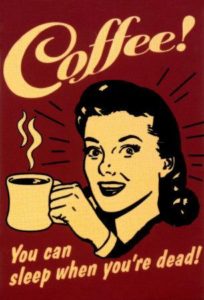
The latte is primarily a breakfast coffee, although people still drink it later in the day and into the early evenings. Nonetheless, it is most prevalent at breakfast time due to the intense caffeine boost provided by the espresso. This highly-concentrated coffee can perk you up in an instant and lasts for a reasonably long time too.
With this in mind, the perfect latte is most commonly enjoyed by those looking for that quick energy boost. But, honestly, it doesn’t matter what type of job you do. Whether you’re an office worker or a construction worker, anyone needing a quick start to the morning may find themselves opting for the latte over many coffee alternatives.
The summer months may see you turn your attention to the iced variant of the drink. Meanwhile, the additions of syrups and other ingredients are purely for taste, although it could be argued that millennials are more likely to opt for those specialty tastes. After all, a Starbucks latte is a fashion statement as well as a tasty and invigorating beverage.
Where are Lattes Most Popular?
While the concept of combining milk with coffee is a longstanding tradition across Europe, it has only been a cafe and coffee shop tradition since gaining popularity in Seattle. However, the espresso plus steamed milk products are now a winner in a modern household and commercial venues from coast to coast.
Starbucks’ research into the most popular festive drinks shows that variants of the latte are the most commonly purchased hot beverages in Texas, California, Western Mountain Region, Mid-Atlantic, Pacific Northwest, and Midwest.
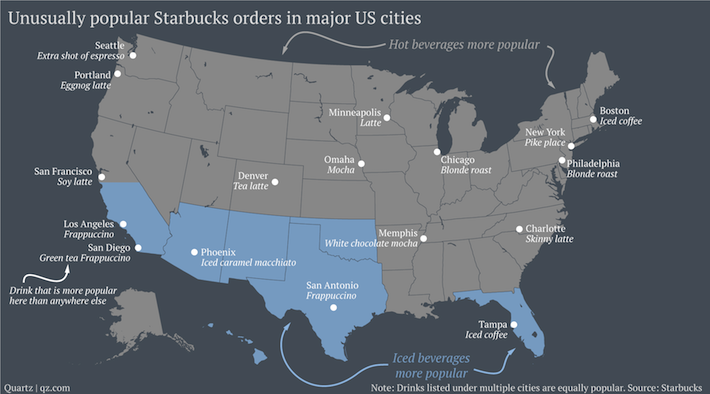
Each region consumes many lattes throughout the year, while sales figures across other areas are still high.
Lattes are popular in Canada, Britain, and many parts of mainland Europe too. Spain, Italy, and France are synonymous with lattes, but millions of Germans, Belgians, Swiss, and Dutch fans. All Scandinavian nations consume a lot of coffee, including lattes, with Finland leading the way in coffees consumed per person per year.
Consumption figures for coffee in Oceania are a little lower, but lattes are considered Australia’s most popular coffee drink. In South America, many Brazilians drink coffee (including lattes), but the rest of the continent is less attractive. Most of Africa drinks little coffee, although some northern territories are a little higher. Asian countries are perhaps more inclined to drink tea, although latte sales are still among the highest coffee beverages.
Essentially, lattes are consumed across the globe, and lattes are a central figure.
Additional Facts About the Latte
Lattes may be relatively new in the grand scheme of our coffee consumption, at least in their current form. Nonetheless, that hasn’t prevented the drink from making a significant imprint on our culture. As a result, we have two days dedicated to the beverage. These are:
- October 7 is National Latte Day.
- December 3 is National Peppermint Latte Day.
David Schomer is the man credited with starting the phenomenon that resulted in our national (and global) love of the drink, even though the term can be traced back to William Dean Howells’ essay ‘Italian Journeys’ over 200 years earlier. Schomer is also a co-founder of Espresso Vivace. For those wanting to create fantastic homemade lattes, his books are an excellent reference point.
The creation of latte art is big business. You can even train in this line of barista work. Meanwhile, Kazuki Yamamoto has taken things to the next level by introducing 3D works, depicting everything from Snoopy to flowers. Furthermore, several competitions are held to decipher the best latte artists on the planet.
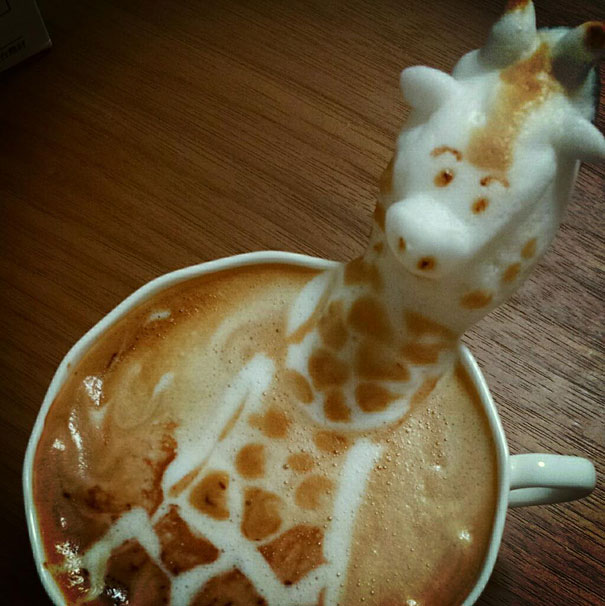
Considering it’s still only 30-something years since the craze started, it isn’t very comforting to think about the future of lattes. But, as long as the great taste remains, we’ll be more than happy. As a side note, I recommend checking out Carrera Cafe in Los Angeles because they do some cool latte art.
The Last Word on Lattes
The latter is undeniably one of the most popular coffee beverages globally, and it started life in its commercial form right here in the USA. While it wasn’t until the 1980s that it began to gain notoriety, it’s now challenging to remember a world without the morning latte. For millions of Americans, it is now very much an essential part of their daily routine.
Whether you opt for a home coffee-making process or stick to your morning trip to the coffee shop doesn’t matter. Just remember to tweak the tastes and the ingredients to suit your taste and dietary preferences for this to remain your perfect latte hit for years to come.
